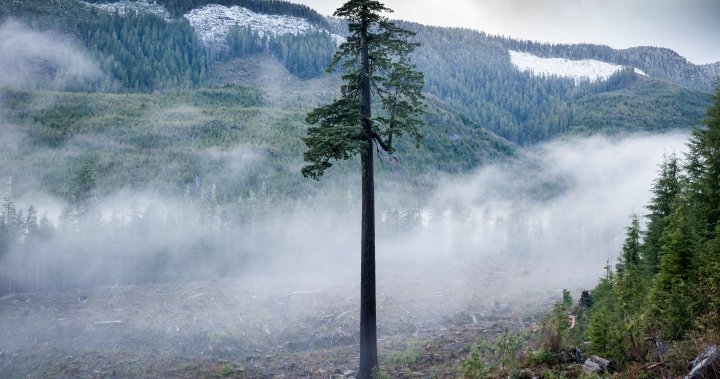[ad_1]
Another way a ‘nature economy’ is finding a foothold is through talent acquisition. Scott Sinclair, whose company, SES Consulting, retrofits buildings to move them off fossil fuels, says having a nature-first mindset baked into the business model attracts innovative young minds who grew up with the environment front and centre – as well as clients.
“It’s just, I think, an incredible business opportunity,” he says.

For some environmentalists as well, this work is about combining environmental action, long associated with protesters blocking roads and affixing themselves onto trees, with the idea of promoting business.
Though still niche, it’s starting to happen.
‘Valuing’ Nature
To understand the economic value of their natural assets, some communities are putting a price on them.
The District of West Vancouver is one of the first in Canada to do so.
There are some rare strands of urban, old growth trees left standing in the city’s Lighthouse Park. In a walk through the park, District officials Matthew MacKinnon and Heather Keith explained the uniqueness of the old growth forest. They told Global News how these ancient trees, some over 500 years old, maintain an extremely biodiverse ecosystem in the park, while offering people a break from the hustle and bustle of city life.
“There are trees here that have lived longer than any person that’s alive right now,” says Heather Keith, the senior manager of climate action and environment for the District.
The municipality has determined the idea has value in dollar figures. It’s one of the first places in Canada to take this approach, estimating its natural assets – forests, waterways, parks – to be in the ballpark of $3.2 billion, with forests providing up to $1.8 billion in ‘services.’
They’ve estimated that to be the cost of ‘replacing’ those assets, which provide immeasurable ecological and health benefits to the community, Keith says.
Many Indigenous communities are also charting a clear path forward toward that new nature economy.
One model that’s proven successful is called Coast Funds. It’s an investment strategy created by coastal First Nations to pool money to help local communities shift from extraction – logging old growth trees, for example – and toward protection. This means keeping those vital resources intact and leveraging them to make them profitable – ecotourism, carbon credits or guardianship programs.
“We understood that 500-year-old trees don’t just grow up overnight,” says Dallas Smith, the president of Nanwakolas Council, a group of six First Nations that’s part of the Coast Funds initiative.
The broader financial and business communities have realized that the costs of environmental inaction are far greater – and are starting to move toward a sustainable direction, too.
Adam Scott is an analyst whose group, Shift Action for Pension Wealth and Planet Health, monitors how credible Canadian pension funds are when it comes to climate action. In January, Shift released a report arguing there’s a long way to go. But at least there is a recognition that things need to change.
“The smart players in the financial industry have understood that […] the financial performance of their institutions is based on having a climate strategy,” he said.
Unfortunately, the moves are largely voluntary and without teeth, says Tom Rand, a managing partner with ArcTern Ventures. In other words, he insists, there’s a long way to go before a nature economy becomes the norm.
“If you’re asking if the broad swath of economic actors are understanding that we can make money preserving nature, absolutely not.”
But big trees are offering an inspiration for change. People name them. They trek through the forest to see them, and in the case of photographer TJ Watt, to document them before they’re gone.
Photo:
TJ Watt/Ancient Forest Alliance
“These are some of the most enchanting and beautiful ecosystems on all of Planet Earth,” says Watt, who represents the Ancient Forest Alliance.
“They’re really some of our oldest friends.”
Tracking giants
When author and book editor Amanda Lewis set out to write a book about big trees, she thought she’d focus on the dwindling, majestic resources nestled in the coastal forests of B.C.
But, solo expedition after solo expedition hiking through various groves in search of the biggest of the big led her to another, more optimistic conclusion – “I wanted to focus on what we have left” and not so much on “what we’ve lost.”
The pandemic was a catalyst for Lewis – and, it seems, for many other Canadians too.
[ad_2]
